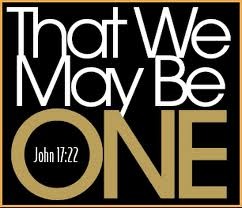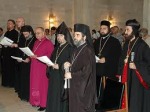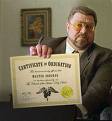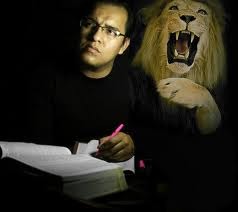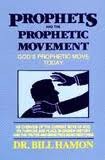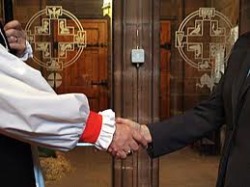A Look at Kent Hunter’s “The Future Is Now: How God Is Moving In The 21st Century Church
 I came across an ebook by Kent R. Hunter of Church Doctor Ministries entitled “The Future Is Now: How God Is Moving In The 21st Century Church.” I would like to quote from this source since it is so good, and then add a few of my analysis to it.
I came across an ebook by Kent R. Hunter of Church Doctor Ministries entitled “The Future Is Now: How God Is Moving In The 21st Century Church.” I would like to quote from this source since it is so good, and then add a few of my analysis to it.
From Chapter 16 – Snapshots of Tomorrow Today, Hunter says: “As churches in the 21st century make decisions, they will recognize that knowing and following the will of God is a challenge, particularly in changing times. They will give themselves permission to try and permission to fail. They will not see failure as final, but as a step toward learning. They will celebrate what they learn. They will focus on their victories and build on their achievements. They will recognize that decision-making is difficult. They will understand the greatest challenge is not what you decide, but how. They will recognize that, in a time of revival, Christians are pioneers. Pioneers are frequently required to retrace their steps because the direction they took for the last several weeks to find a pass through the mountains turned out only to be a box canyon, and they must now go back to their original point and try again. Everyone understands. This is what pioneers do. This is living by grace.”
 To embrace the five fold, one has to have a pioneering spirit, for the five fold is a completely different mind set demanding an unique paradigm shift where relationships built on service is more important than the structure. The idea of the priesthood of believers again being allowed to do the ministry of service is a new mind set. Thinking of evangelism, pastoral shepherding, teaching through experience, listening then obeying the voice of God, living the Logos Word through revelation, and overseeing then releasing believers are passions and points of view, not institutional offices or religious titles. Birthing, nurturing, teaching through experience, seeking revelation, and over sight are actions, not offices. It will take a pioneer who is willing to serve others and be served by others who have different passions and points of view to be willing to die to self and lay down his life for his brethren. These are the challenge of the 21st century believer who embraces the five fold.
To embrace the five fold, one has to have a pioneering spirit, for the five fold is a completely different mind set demanding an unique paradigm shift where relationships built on service is more important than the structure. The idea of the priesthood of believers again being allowed to do the ministry of service is a new mind set. Thinking of evangelism, pastoral shepherding, teaching through experience, listening then obeying the voice of God, living the Logos Word through revelation, and overseeing then releasing believers are passions and points of view, not institutional offices or religious titles. Birthing, nurturing, teaching through experience, seeking revelation, and over sight are actions, not offices. It will take a pioneer who is willing to serve others and be served by others who have different passions and points of view to be willing to die to self and lay down his life for his brethren. These are the challenge of the 21st century believer who embraces the five fold.
 “Knowing and following the will of God” was “challenging” to the 20th century believer when trying to minister out of his passion individually, but I believe will not be as difficult to the 21st century believer when submitting to the other four different passions and points of view in the five fold who will discern God’s will in unity. Strategies needed to fulfill that calling or direction will not be as hard to implement as whatever passion or gift can rise at the time needed while being supported by the other four passions. The “how” to do it will be easier since it is Holy Spirit lead, and supported by five different passions and gifting working in service in unity. This team work lead by the Holy Spirit will bring unity in the body of Christ. The laying down of one’s life for his brethren will be the key.
“Knowing and following the will of God” was “challenging” to the 20th century believer when trying to minister out of his passion individually, but I believe will not be as difficult to the 21st century believer when submitting to the other four different passions and points of view in the five fold who will discern God’s will in unity. Strategies needed to fulfill that calling or direction will not be as hard to implement as whatever passion or gift can rise at the time needed while being supported by the other four passions. The “how” to do it will be easier since it is Holy Spirit lead, and supported by five different passions and gifting working in service in unity. This team work lead by the Holy Spirit will bring unity in the body of Christ. The laying down of one’s life for his brethren will be the key.
